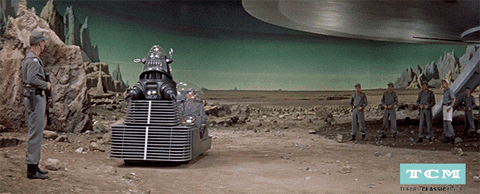Making Waves: How Electronic Synthesizers Work
In November 1967, The Monkees released their fourth studio album titled Pisces, Aquarius, Capricorn & Jones. This album was among one of the first records that featured music from one of the earliest Moog electronic synthesizers. Synthesizers, typically operated by a built-in keyboard, allow people to edit and create sound starting from simple waveforms.
As synthesizers became more accessible in the late 1970s, music that featured synthesized sounds eventually earned its own genre known as “synthpop.” Nowadays, across all genres, music producers weave electronic sounds into almost every popular song. In movies, sound designers engineer sound effects using synthesizers to help create the atmosphere and tell the story. So, how do synthesizers work?
“Synthesizers allow you to create complex waveforms,” explained Chris Cella, friend of Tech Square ATL (TSQATL) Social Club and self-taught synthesizer enthusiast. “There’s a lot of intricacies you can [add, subtract, or modify] in one wave.”
There are different methods of sound synthesis, which include additive synthesis, subtractive synthesis, and frequency modulation (FM) synthesis. Here, we’ll briefly look into how synthesizers work in the context of subtractive synthesis.
As with everything that sparks our curiosity here at TSQATL Social Club, we’ll start with why the electronic synthesizer was invented.
WHY THE ELECTRONIC SYNTHESIZER WAS INVENTED
Synthesizers were originally made to enable scientific researchers to learn more about the properties of sound. In 1955, acoustic engineers Harry Olson and Herbert Belar developed the first electronic sound synthesizer at the Radio Corporation of America (RCA) laboratories in Princeton, New Jersey.
WHY SYNTHESIZERS ARE USEFUL TO MUSICIANS
This music technology is attractive to musicians (both then and now) because it empowers them to achieve more control over the music they make. Sound, in its most basic form, is an energetic vibration (or oscillation) that takes form as an auditory wave.
Because synthesizers allow people to generate sound in the form of simple waveforms, this music technology makes it easy for users to manipulate and combine different types of sound, down to its frequency, duration, timbre, and intensity.
HOW SUBTRACTIVE SYNTHESIZERS WORK (IN THREE STAGES)
Synthesizer Demonstration by Chris Cella, using a Sequential Circuits Prophet Rev 2
The oscillator, filter, and amp envelope are key components in a modern synthesizer. These components allow musicians to modify an existing waveform, or layer them to create a completely new sound. Here are the stages in which the waveform travels through.
1. Oscillator
First, the sound is produced. The oscillator produces the original sound — the full sound of a waveform, containing all of its dynamic range and frequencies. There are many types of waveforms (or oscillations) a modern synthesizer can produce, but some of the most common are:
Sine wave - produces a mild, soft tone
Sawtooth wave - produces a sharp, biting tone
Triangle wave - produces a sound in between a sawtooth and a sine wave
Square wave - produces a reedy, hollow sound
2. Filter
After the original sound is made, it passes through the filter. The filter subtracts unwanted frequencies from the original sound. There are two key filters:
Low Pass Filter (LPF) - allows low frequencies to pass through
High Pass Filter (HPF) - allows high frequencies to pass through
3. Amp Envelope
Then, the sound passes through the amp envelope, which is key to changing its volume over time. The amp envelope is broken down into four stages:
Attack - the amount of time from silence to the maximum volume of the sound
Decay - how long it takes for the sound to fall to the sustain level
Sustain - the volume that the sound is continuously held
Release - how long the sound takes to go down to silence from the sustain level
Take a moment to consider the differences in sound between a snare drum and a clarinet. The snare drum has a sharp increase in volume (attack), little to no sustain, and a short release time. Conversely, the clarinet sound can have a longer, slower attack, building to a maximum volume, with a long sustain before the sound releases.
Now that you have a basic idea of how subtractive synthesis works, you have a better understanding of how this dynamic piece of music technology manipulates sound. Some synthesizers available to consumers today also have an oscilloscope built in, which visualizes waveforms as you create and modify them.
Today, researchers and manufacturers are continuing to work together to further innovate sound synthesis. Along with peripheral technologies that demand better sound quality, it’s exciting to imagine the range of new sounds that will be created by musicians and sound engineers in the coming years.
“Synthesis can seem daunting at first,” shared Chris Cella, “but after you grasp it, the results are really rewarding.” Cella, who is the commercial video director at a local Atlanta advertising agency, often does sound design for his own projects. Recently, he got a Sequential Circuits Prophet Rev 2, which is a polyphonic synthesizer. “I used the Prophet on a recent commercial for a fast food brand. Using the noise generator, LPF and a few low-frequency oscillations (LFOs), I recreated the sound of hamburgers being grilled.”
What are some of your current favorite songs or soundtracks? Perhaps you have some favorite producers and sound engineers? Let us know in the comments below.
DID YOU KNOW?
Forbidden Planet (1956) was the first film soundtrack consisting entirely of electronic sounds. The scores were written by Bebe and Louis Barron. According to this LA Times article, the Barrons “created electronic circuits, which produced tones that they altered with a tape recorder. Louis usually built the circuits while Bebe pieced together the beeps, burbles and bubblings into a score that even the Barrons were reluctant to call ‘music.’”





